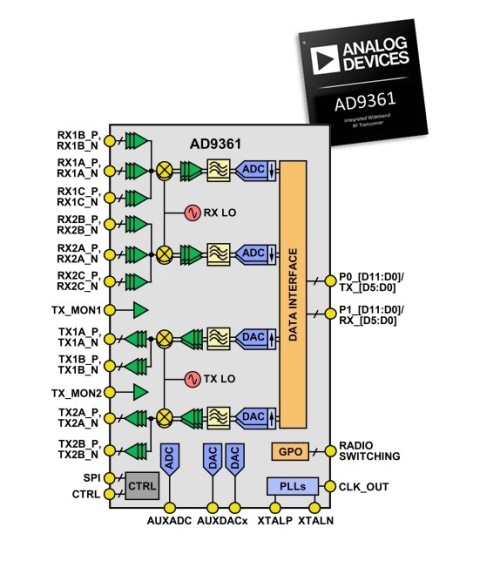We recently had the opportunity ask Tony Montalvo — RF Transceiver Design Engineering Manager for Analog Devices, and the main force behind the creation of the AD9361 RF Agile Transceiver — about the origin of that PoY-award-winning product. As we noted in our January issue (www.electronicproducts.com/Analog_Mixed_Signal_ICs/Communications_Interface/Analog_device_is_the_tipping_point_for_SDR.asp), the AD9361 is the first product to provide “an easy way to implement the necessary analog functionality” for software-defined radio (SDR). Here’s our interview with Tony:
Electronic Products : How did the idea for the AD9361 come about, and what were the critical factors in committing to the product’s development?
Tony Montalvo : The idea came several years ago. There were two drivers.
First, we observed that there were many applications that would benefit from a low-power, highly integrated radio, but that were too small to justify a specific development. At the time, highly integrated RF ICs were application specific, which in this context means that they could only be tuned to a particular RF band and only support a relatively small range of bandwidths.
Second, we thought that there could be single applications that could benefit from a software-defined radio. These were the business justifications.

EP : What were the technical considerations in committing to development?
Montalvo : On the technical side, we realized that deep-sub-micron CMOS had some characteristics that could make it possible. Namely, the parasitic capacitances were low enough to enable low-power and wide-band signal paths.
In older technologies, resonant (LC) circuits are required to achieve gain and low power. Eliminating inductors is critical because inductors don’t scale with Moore’s Law at all. Other nice features of deep-sub-micron CMOS are low-parasitic switches, which allow us to make high-quality digitally tuned capacitors, which in turn enable the wide tuning range of the local oscillator. Of course, the relatively inexpensive and low-power digital enable a variety of performance-enhancing calibrations, such as quadrature error correction.
EP : How did the product development process go?
Montalvo : The product definition was really pretty simple. There are a huge variety of important RF applications between ≈100 MHz and 6 GHz, and up to about 60-MHz bandwidth. We figured if we could tune over that [former] range while achieving good performance and low power, we’d have an attractive product.
EP : What was the market acceptance like? What feedback did you get from the marketplace?
Montalvo : The market acceptance has been overwhelming — literally! As you might imagine, a product with this level of reconfigurability is fairly complex; it took some time for the support tools to catch up with the customer demand.
EP : Has this product’s development led to ideas for future products? How do you foresee the product family growing in the future?
Montalvo : Yes! That’s one of the great things about this product — it’s a great conversation starter. There are several developments in the works. Stay tuned.
Advertisement
Learn more about Analog Devices





